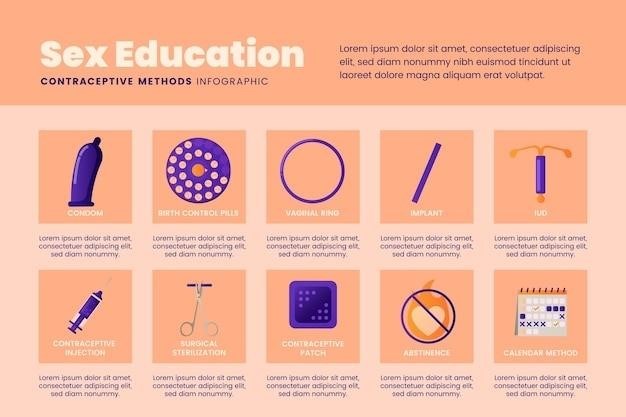Prostate Massage⁚ Benefits, Risks, and Techniques
Prostate massage is a technique used to alleviate symptoms of an enlarged or inflamed prostate. It’s also being explored for use in medical settings to treat certain conditions. It involves stimulating and massaging the prostate gland for medical purposes or sexual stimulation. A physician may perform a prostate massage to relieve certain symptoms of an inflamed prostate, providing benefits that include improved urine flow and sexual function.
What is Prostate Massage?
Prostate massage, also known as prostatic massage, is a technique that involves stimulating and massaging the prostate gland, typically through the rectum. This procedure can be performed for medical or sexual purposes, with varying levels of pressure and techniques employed.
In a medical context, prostate massage is often performed by a urologist during a digital rectal examination (DRE). The urologist inserts a gloved finger into the rectum to feel for any abnormalities in the prostate, such as nodules that might indicate cancer. During this procedure, the urologist may also massage the prostate to collect a sample of prostatic fluid, known as expressed prostatic secretion (EPS), which can be analyzed for signs of infection or inflammation.
Prostate massage for sexual purposes, sometimes referred to as “prostate milking,” involves stimulating the prostate gland for pleasure. This is often done with a finger or a sex toy inserted into the rectum, focusing on the area where the prostate gland is located. The stimulation can lead to intense sensations and potentially multiple orgasms.
It’s important to note that while prostate massage has been explored for potential medical benefits and is often used for sexual pleasure, it’s not a universally accepted practice, and its effectiveness and safety remain subjects of ongoing research and debate.
Medical Benefits of Prostate Massage
Prostate massage has been explored for potential medical benefits, particularly in the management of certain prostate-related conditions. While research on its effectiveness is limited, some studies suggest potential benefits, primarily in the following areas⁚
Prostatitis⁚ Prostate massage is sometimes used to treat prostatitis, an inflammation of the prostate gland. The massage may help to drain fluid from the prostate and reduce swelling, potentially alleviating symptoms such as pain, difficulty urinating, and frequent urination. However, it’s crucial to note that prostatitis can be caused by various factors, including bacterial infection, and prostate massage alone may not be sufficient for treatment.
Erectile Dysfunction (ED)⁚ Some men report experiencing improved erectile function after prostate massage. The theory behind this potential benefit is that the massage may stimulate blood flow to the pelvic region, which can improve erectile function. However, more research is needed to confirm this association and understand the specific mechanisms involved.
Diagnostic Purposes⁚ Prostate massage is often used by urologists to collect a sample of prostatic fluid for analysis. This fluid can help to diagnose conditions such as prostatitis, infection, and even prostate cancer. The analysis of prostatic fluid can provide valuable insights into the health of the prostate gland.
While prostate massage may offer potential medical benefits, it’s essential to consult a healthcare professional for a proper diagnosis and treatment plan. Prostate massage should not be considered a substitute for traditional medical care.
Prostate Massage for Erectile Dysfunction
Prostate massage has been explored as a potential treatment for erectile dysfunction (ED), but the evidence supporting its effectiveness is limited and inconclusive. While some men have reported experiencing improved erectile function after prostate massage, there is no strong scientific consensus to confirm this association.
The proposed mechanism by which prostate massage might benefit ED is through improved blood flow to the pelvic region. The prostate gland is located near the base of the bladder and close to the urethra, which carries urine and semen. The theory suggests that stimulating the prostate gland through massage could potentially enhance blood flow to the surrounding tissues, including the penis. This increased blood flow could contribute to improved erectile function.
However, it’s important to emphasize that this is just a theoretical explanation and further research is needed to validate this claim. Other factors, such as stress, anxiety, lifestyle choices, and underlying medical conditions, can also contribute to ED, and prostate massage alone may not address all of these contributing factors.
While some men may experience a temporary improvement in erectile function after prostate massage, it’s crucial to consult a healthcare professional for a proper diagnosis and treatment plan for ED. A healthcare professional can provide personalized advice based on your individual circumstances and recommend appropriate treatment options, which may include medication, lifestyle modifications, or other therapeutic interventions.
Prostate Massage for Prostatitis
Prostatitis, an inflammation of the prostate gland, can cause discomfort, pain, and urinary problems. While not a primary treatment, prostate massage can be used as a complementary approach in managing prostatitis symptoms. It is believed to help by releasing fluid from the prostate duct, potentially reducing pressure and inflammation within the gland.
Prostate massage involves gentle stimulation of the prostate gland through digital rectal examination (DRE). A healthcare professional, often a urologist, performs the massage using a gloved finger inserted into the rectum. The massage technique involves circular motions and pressure applied to the prostate gland, aiming to promote fluid drainage from the prostate ducts.

The released fluid, known as expressed prostatic secretion (EPS), can be analyzed under a microscope to assess for signs of infection or inflammation. While prostate massage may help relieve symptoms in some men, it’s crucial to emphasize that it is not a cure for prostatitis. A healthcare professional should diagnose and manage prostatitis using appropriate treatment options, which may include antibiotics, anti-inflammatory medications, and lifestyle modifications.
Prostate massage should only be performed by a qualified healthcare professional with expertise in treating prostatitis. Self-massage is not recommended due to the risk of complications and potential for worsening symptoms. It’s essential to discuss any concerns or symptoms with a healthcare provider before attempting any self-treatment measures.
How to Perform a Prostate Massage
Prostate massage is a technique that involves stimulating the prostate gland, typically for medical or sexual purposes. It’s a delicate procedure that should only be performed by a qualified healthcare professional, such as a urologist, or by a trained individual with proper guidance and consent. Performing a prostate massage on oneself or by an untrained individual can pose risks and potentially worsen symptoms.
The massage is usually performed during a digital rectal examination (DRE), where a gloved finger is inserted into the rectum to locate the prostate gland. The prostate gland is located about two inches inside the rectum, feeling like a firm, heart-shaped organ. Gentle, circular motions and pressure are applied to the prostate gland, aiming to promote fluid drainage from the prostate ducts.
The prostate massage technique involves understanding the anatomy of the prostate and the surrounding area. It requires a gentle touch to avoid discomfort or injury. The duration of the massage and the amount of pressure applied vary depending on the individual’s needs and the purpose of the massage. It’s crucial to communicate any discomfort or pain to the person performing the massage.
Prostate massage should only be performed under the supervision of a qualified healthcare professional or with proper training and guidance. Self-massage is not recommended and can carry risks. Always seek professional advice and guidance before attempting any prostate massage techniques.
Risks and Side Effects of Prostate Massage
While prostate massage can offer potential benefits for certain conditions, it’s crucial to be aware of the associated risks and side effects. These risks can vary depending on the individual’s health, the technique used, and the experience of the person performing the massage.
One of the most common risks is discomfort or pain. Prostate massage can sometimes cause discomfort or pain, especially for individuals with an already inflamed prostate. This discomfort is usually temporary and subsides after the massage. It’s essential to communicate any discomfort or pain to the person performing the massage so they can adjust the technique accordingly.

Another risk is the potential for infection. Prostate massage involves inserting a finger into the rectum, which can introduce bacteria into the prostate gland, leading to prostatitis, an inflammation of the prostate. Maintaining proper hygiene, using sterile gloves, and ensuring the person performing the massage has clean hands are crucial to minimizing this risk.
Additionally, prostate massage can sometimes trigger ejaculation, which can be undesirable in some situations. It’s important to discuss this possibility with the person performing the massage beforehand. In some cases, prostate massage may also cause temporary urinary retention or difficulty urinating.
It’s essential to consult with a healthcare professional before undergoing prostate massage, especially if you have any underlying health conditions. They can assess your individual risks and benefits and recommend appropriate treatment options.
Prostate Massage for Sexual Pleasure
Prostate massage can be a pleasurable experience for many men, adding a new dimension to sexual intimacy. The prostate gland is a small, walnut-sized organ located just below the bladder, and stimulation of this area can lead to intense sensations and multiple orgasms.
The prostate is rich in nerve endings, making it highly sensitive to touch. When stimulated, it can trigger powerful sensations that can be both physically and emotionally rewarding. Some men describe the sensations as similar to a deep, intense orgasm, while others find it to be a unique and enjoyable experience.
Prostate massage can be incorporated into various sexual activities, including foreplay, partnered massage, and solo exploration. It can be performed with fingers, toys, or even during intercourse. The key is to approach it with a sense of curiosity, exploration, and communication with your partner. It’s crucial to establish clear boundaries and ensure both partners are comfortable and consent to the activity.
Remember, prostate massage is a personal experience, and what feels good for one person may not feel good for another. Experimentation and open communication are essential to discovering what works best for you and your partner.
If you’re interested in exploring prostate massage for sexual pleasure, there are many resources available online and in libraries. It’s also a good idea to talk to your partner about your interests and any concerns you may have. With open communication and a willingness to explore, prostate massage can be a rewarding and enriching part of your sexual life.
Prostate Massage Devices
Prostate massage devices are designed to provide stimulation and pleasure for men who enjoy prostate massage. They come in a variety of shapes, sizes, and materials, catering to different preferences and needs. Some are designed specifically for prostate massage, while others are versatile toys that can be used for both anal and prostate stimulation.
Common prostate massage devices include⁚
- Prostate massagers⁚ These devices are typically made of silicone or rubber and feature a curved or angled tip designed to stimulate the prostate. They often come with different vibration settings and may include features like heat or water resistance.
- Anal beads⁚ These are small, round beads that can be inserted into the rectum and used for both anal and prostate stimulation. They are available in various sizes and materials, including glass, metal, and silicone.
- Bullet vibrators⁚ These small, cylindrical vibrators can be used for both anal and prostate stimulation. They are often waterproof and come with various vibration settings.
- Remote-controlled vibrators⁚ These toys offer the convenience of remote control, allowing you to adjust settings and control the stimulation from a distance.
When choosing a prostate massage device, it’s important to consider factors like size, shape, material, vibration settings, and water resistance. It’s also essential to prioritize safety and hygiene. Always choose devices made from safe, hypoallergenic materials and clean them thoroughly before and after each use.
Remember, exploring your sexuality and finding what feels good is a personal journey. Don’t be afraid to experiment with different devices and techniques until you find what works best for you.
Prostate Massage⁚ A Controversial Practice
Prostate massage has been a subject of debate and controversy, particularly when it comes to its medical benefits and ethical considerations. While some proponents argue that it can alleviate symptoms of prostate conditions like prostatitis and even improve erectile dysfunction, scientific evidence supporting these claims is limited and inconclusive.
One of the main criticisms surrounding prostate massage is the lack of robust scientific research to validate its effectiveness. Many studies on the topic are small-scale and often lack control groups, making it difficult to draw definitive conclusions about its benefits. Furthermore, the potential risks associated with prostate massage, such as infection, bleeding, and discomfort, raise concerns about its safety, especially when performed without proper medical supervision.
Another ethical dilemma arises from the potential for exploitation and coercion. Some argue that prostate massage can be used to manipulate or exploit individuals, particularly in contexts where power imbalances exist, such as therapeutic or romantic relationships. This raises questions about informed consent and the importance of establishing clear boundaries and respectful practices.
Despite the controversy, prostate massage remains a practice explored by some individuals for both medical and pleasure-seeking purposes. It’s important to approach this practice with caution, prioritize informed consent, and be aware of the potential risks and benefits involved.
Prostate Massage⁚ A Holistic Approach
While prostate massage often sparks discussions around its medical applications and potential benefits for conditions like prostatitis and erectile dysfunction, a holistic approach emphasizes its role in overall well-being and sexual pleasure. This perspective recognizes that prostate stimulation can contribute to a sense of relaxation, stress reduction, and enhanced intimacy.
Proponents of a holistic approach argue that prostate massage can be integrated into a broader framework of self-care and sexual exploration. It can be a way to connect with one’s body, increase awareness of sensations, and explore different forms of pleasure. For some individuals, prostate massage can be a source of intense pleasure and orgasmic experiences, potentially leading to greater sexual satisfaction.
However, it’s essential to approach prostate massage with a mindful and respectful attitude. Open communication with partners, clear consent, and a focus on mutual pleasure are crucial elements of a holistic approach. It’s important to recognize that individual experiences can vary, and what feels good for one person may not be enjoyable for another.
Ultimately, a holistic approach to prostate massage emphasizes the importance of individual choice, informed consent, and the pursuit of pleasure and well-being. It encourages individuals to explore their own bodies and desires, while respecting boundaries and promoting healthy and fulfilling relationships.



